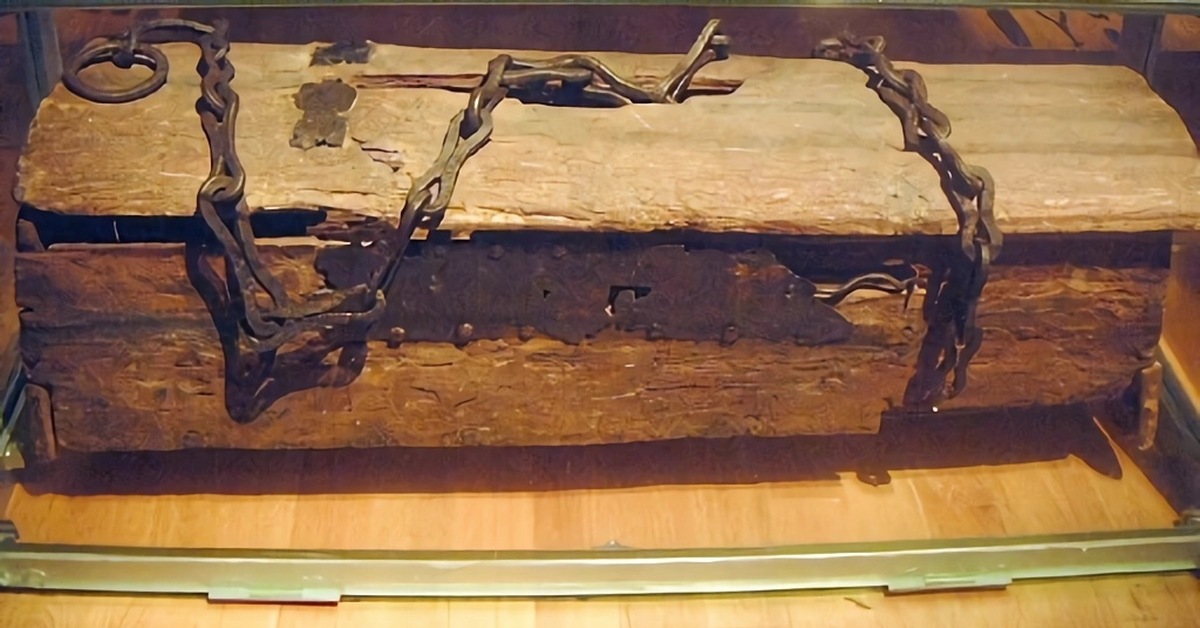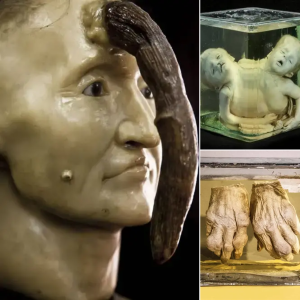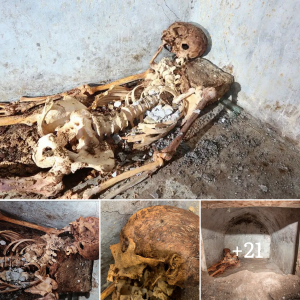Scientists have found fragments a human-made projectile point in a rib of an American mastodon (Mammut americanum) from the Manis site, Washington, the United States. The projectile point is about 13,900 years old and is morphologically different from later cylindrical points of the 13,000-year-old Clovis culture. The artifact, which is made of mastodon bone, shows that people predating Clovis made and used osseous weapons to hunt megafauna in the Pacific Northwest.

Reconstruction of the distal end of the Manis projectile point. Image credit: Waters et al., doi: 10.1126/sciadv.ade9068.
In the 1970s, archaeologists excavated a single male mastodon from sediments at the base of a kettle pond at the Manis site, Washington.
No stone tools were found at the site, but human interaction with the mastodon was suggested by bones with spiral fractures, flakes removed from a long bone, and bones with cut marks.
In addition, the end of a mastodon’s right rib had foreign fragments embedded in it.
Those foreign pieces were interpreted to be the tip of a projectile point that broke apart as it impacted and entered the rib.
In the new study, Texas A&M University’s Professor Michael Waters and colleagues used high-resolution micro-CT scans and 3D software to study those foreign pieces.
They isolated all the fragments to show it was the tip of a human-made projectile point (34.5 mm long, 16.9 mm wide, and 5.8 mm thick).
According to the team, the fragments became embedded in the rib when the mastodon was alive, as indicated by the visible healing around the site of the wound.
The genetic study showed that the bone fragments embedded in the rib are from a mastodon.

The Manis mastodon rib with an embedded projectile point: (A) three views of the rib fragment with embedded point; (B) close-up views of the embedded point; note root staining on the bone and embedded bone point. Image credit: Waters et al., doi: 10.1126/sciadv.ade9068.
“We isolated the bone fragments, printed them out and assembled them,” Professor Waters said.
“This clearly showed this was the tip of a bone projectile point. This is this the oldest bone projectile point in the Americas and represents the oldest direct evidence of mastodon hunting in the Americas.”
“At 13,900 years old, the Manis point is 900 years older than projectile points found to be associated with the Clovis people, whose stone tools he has also studied.”
“Dating from 13,050 to 12,750 years ago, Clovis spear points have been found in Texas and several other sites across the country.”
“What is important about Manis is that it’s the first and only bone tool that dates older than Clovis. At the other pre-Clovis site, only stone tools are found.”
“This shows that the First Americans made and used bone weapons and likely other types of bone tools.”
Not much is known about the people who used the Manis projectile point other than they were some of the first Indigenous people to enter the Americas.
“The Manis site and others are giving archaeologists some insight,” Professor Waters said.
“It is looking like the first people that came to the Americas arrived by boat. They took a coastal route along the North Pacific and moved south. They eventually got past the ice sheets that covered Canada and made landfall in the Pacific Northwest.”
“It is interesting to note that in Idaho there is the 16,000-years-old Coopers Ferry site, in Oregon is the 14,100-year-old site of Paisley Caves.”
“And here we report on the 13,900-year-old Manis site. So there appears to be a cluster of early sites in the Northwestern part of the United States that date from 16,000 to 14,000 years ago that predate Clovis.”
“These sites likely represent the first people and their descendants that entered the Americas at the end of the latest Ice Age.”
The study was published in the journal Science Advances.





